 Below, you’ll find a list of storybooks we think are suitable for supporting children in early years to learn about STEM topics.
Below, you’ll find a list of storybooks we think are suitable for supporting children in early years to learn about STEM topics.
The books have been categorised by learning topics that support the Early Learning Goal statements for Understanding the World: The World. We have also included topics to support the Early Learning Goals for Mathematics: Shape, Space and Measure, and Understanding the World: Technology.
Each recommendation includes a brief description of the book, information about the number of pages and the amount of text per page, comments on why we have chosen the book, and why we think they are good for STEM learning, and a link for further information or ordering.
Balancing Act by Ellen Stoll Walsh
Two mice are perfectly balanced on a see-saw, but what happens when a chameleon wants to join in with their game? Will the see-saw stay balanced as more and more animals get on each end? This book has 29 pages with two sentences or less per double page. We like the way balance is introduced using symmetry – the pairs of animals that get on each end of the see-saw are identical in shape, size and weight. We also like the way that the book shows that lots of lighter animals can be equal in weight to one heavy animal. We love the part when too many animals get onto the see-saw and the consequence of this! For balancing activities, take a look at our balancing STEM at home page.
Relevant Early Learning Goals
- Mathematics ELG: Numerical Patterns. Compare quantities up to 10 in different contexts, recognising when one quantity is greater than, less than or the same as the other quantity;
- Mathematics ELG: Numerical Patterns. Explore and represent patterns within numbers up to 10, including evens and odds, double facts and how quantities can be distributed equally.
Buy Balancing Act here.
Balance the Birds by Susie Ghahremani
In this book a tree bends if there are more birds sat on one side than another. It builds on the balancing concepts found in “Balancing Act”, by using numbers to represent how many birds are on each side, showing that these numbers must be equal for the tree to be straight. The book has 34 double pages, with one or two sentences per double page. We love the way the book introduces the concept of half to describe how many birds are on each side of the tree when they are balanced. We like the way this book shows that lots of lighter birds are needed to balance a heavier bird, then challenges the reader to work out how they could balance birds of all different sizes. For balancing activities, take a look at our balancing STEM at home page.
Relevant Early Learning Goals
- Mathematics ELG: Numerical Patterns. Compare quantities up to 10 in different contexts, recognising when one quantity is greater than, less than or the same as the other quantity;
- Mathematics ELG: Numerical Patterns. Explore and represent patterns within numbers up to 10, including evens and odds, double facts and how quantities can be distributed equally.
Buy Balance the Birds here.
Too Many Bubbles! by David Gibb
An entertaining rhyming story about what happens if you use too much bubble bath when you are washing the dog. This book is 32 pages long and has a rhyming sentence per page. Although there is a great deal of fantasy- the town covered in suds and animals floating in bubbles- this book can be used to introduce scientific concepts and investigations. We would use it to introduce questions such as how are suds and bubbles are formed, what shapes can bubbles be, why do bubbles burst and what happens if you add more detergent to your running tap? For a mess free bubbles activity, see our bubbles STEM at home page.
Relevant Early Learning Goals
- Understanding the World ELG: People, Culture and Communities. Describe their immediate environment using knowledge from observation, discussion, stories, non-fiction texts and maps.
- Understanding the World ELG: The Natural World. Understand some important processes and changes in the natural world around them, including the seasons and changing states of matter.
Buy Too Many Bubbles! here.
Nature Girls by Delphine Mach
In this rhyming text, the Nature Girls pack their bags and set off on an adventure around the world. They explore a variety of natural habitats, visiting environments such as the rainforest, the desert, the Arctic and even under the sea. This book is 28 pages long with two rhyming lines per page. We like the way this book introduces the ways that habitats around the world differ from each other. We love that the characters in the book are a diverse mix of girls, each with their own personality and each following their own interests on each page. We think EYFS children will enjoy tracking their own favourite girl through their adventures in the natural world.
Relevant Early Learning Goals
- Understanding the World ELG: People, Culture and Communities. Explain some similarities and differences between life in this country and life in other countries, drawing on knowledge from stories, non-fiction texts and – when appropriate – maps.
- Understanding the World ELG: The Natural World. Know some similarities and differences between the natural world around
them and contrasting environments, drawing on their experiences and what has been read in class.
Buy Nature Girls here.
At the Same Moment Around the World by Clotilde Perrin
This book shows what children in each of the 24 different time zones are doing at exactly the same moment in time. It starts at 7am, Greenwich mean time and travels eastwards, jumping forwards an hour in each location. This book is quite long at 32 pages with 4 lines of text per page but has superb illustrations full of interesting details that will keep EYFS children engaged. We think this book is great for illustrating the way environments around the world differ and for introducing the similarities and differences between themselves and other communities and traditions around the world. It is also great for introducing the topic of clocks and the time. We also love the world map in the back of the book that can be used to explore where each of the children in the book lives.
Relevant Early Learning Goals
- Understanding the World ELG: People, Culture and Communities. Explain some similarities and differences between life in this country and life in other countries, drawing on knowledge from stories, non-fiction texts and – when appropriate – maps.
- Understanding the World ELG: The Natural World. Know some similarities and differences between the natural world around them and contrasting environments, drawing on their experiences and what has been read in class.
Buy At the Same Moment Around the World here.
Construction by Sally Sutton
This rhyming book details how a library is built from start to finish, starting from the foundations, construction, electrics, plumbing and finally people shows people in the building. The book has 28 pages with two rhyming sentences per double page. We really love the onomatopoeic language used to describe the different parts of the construction. We think EYFS children will enjoy joining in with action verbs used to describe the construction processes. The appealing illustrations are bright and colourful and also accurate and detailed in their representation of the vehicles, materials, tools and workers involved in the construction process. We have created these related STEM at home activities: see our If I built a house page, our cardboard building shapes page. our paper pillars here and our building bridges STEM at home page.
Relevant Early Learning Goals
- Understanding the World ELG: People, Culture and Communities. Describe their immediate environment using knowledge from observation, discussion, stories, non-fiction texts and maps.
- Expressive Arts and Design ELG: Creating with Materials. Safely use and explore a variety of materials, tools and techniques, experimenting with colour, design, texture, form and function;
- Expressive Arts and Design ELG: Creating with Materials. Share their creations, explaining the process they have used;
- Expressive Arts and Design ELG: Creating with Materials. Make use of props and materials when role playing characters in narratives and stories.
Buy Construction here.
If I Built a House by Chris Van Dusen
This rhyming text is reminiscent of Dr Seuss in its rhythm and imaginative content. It is quite long at 28 pages with six lines of rhyming text per double page, but we think the vivid descriptions and detailed illustrations will keep the majority of EYFS aged children engaged. We love this tale of a future architect planning and describing his ideal home. His creative interior includes structures such as ball pools, helter-skelters and flying rooms, complete with robot arms to run it all. We think this is a great book for inspiring children to design their own future homes using construction materials at school or at home with their families. We have created these related STEM at home activities: see our If I built a house page, our cardboard building shapes page. our paper pillars here and our building bridges STEM at home page.
Relevant Early Learning Goals
- Understanding the World ELG: People, Culture and Communities. Describe their immediate environment using knowledge from observation, discussion, stories, non-fiction texts and maps.
- Expressive Arts and Design ELG: Creating with Materials. Safely use and explore a variety of materials, tools and techniques, experimenting with colour, design, texture, form and function;
- Expressive Arts and Design ELG: Creating with Materials. Share their creations, explaining the process they have used;
- Expressive Arts and Design ELG: Creating with Materials. Make use of props and materials when role playing characters in narratives and stories.
Buy If I built a House here.
Dinosaurs
Understanding the World ELG: Past and Present
Stomp, Dinosaur, Stomp! By Margaret Mayo
EYFS children will enjoy acting out the abundance of action verbs used to describe the different dinosaurs in this book. Each of the 15 double pages provides a basic description of a different dinosaur, there’s also a handy phonetic guide to the pronunciation of their names included at the end of the book. We really love the predictable, rhythmic pattern of the text and onomatopoeic language used to describe the dinosaurs. The bright colours and stylistic illustrations will appeal to a wide range of EYFS aged children. We think this would be a great for comparing the different colours, shapes, sizes and other characteristics of a range of dinosaurs.
Relevant Early Learning Goals
- Understanding the World ELG: Past and Present. Understand the past through settings, characters and events encountered in books read in class and storytelling.
Buy Stomp, Dinosaur, Stomp! here.
Song of the Dinosaurs by Patricia Hegarty
This is most scientifically correct book about dinosaurs we have found for younger children. It describes the evolution of dinosaurs using dye cut holes to grab children’s attention. The book has 30 pages, with no more than four sentences of text per double page. We love the realistic illustrations with detailed background habitats, and the timeline of the evolution of the dinosaurs at the back of the book. It’s a great resource for extending the knowledge and understanding of dinosaur fanatics and children with an interest in the past.
Relevant Early Learning Goals
- Understanding the World ELG: Past and Present. Know some similarities and differences between things in the past and now, drawing on their experiences and what has been read in class;
- Understanding the World ELG: Past and Present. Understand the past through settings, characters and events encountered in books read in class and storytelling.
Buy Song of the Dinosaurs here.
The Dreamer by Il Sung Na
There was once a pig who admired birds. This is the story of how that pig managed to fly. The book has 48 pages, but only one sentence or less of text per double page. The pig first plans how to make/build his flying machine, and when it doesn’t work, he tries again. We love this message of resilience. It is also a great introduction to the way an engineer works. Further examples of how an engineer works are given when the pig listens to and collaborates with friends to modify the flying machine until itflies. We like the way the pig inspires many other animals to build flying machines with his hard work. The pig continues to challenge himself by building a rocket to see how high he can fly, providing the positive message that anything is possible if you keep trying. For flying related activities, see our paper aeroplane STEM at home page and our fish tumblers page.
Relevant Early Learning Goals
- Understanding the World ELG: The Natural World. Understand some important processes and changes in the natural world around them, including the seasons and changing states of matter.
Buy The Dreamer here.
Egg Drop by Mini Grey
A great book to introduce EYFS children to the topic of flying. Everybody knows that eggs can’t fly but this egg wants to try! This book is 28 pages long with 4 to 5 sentences or less of text on each double page. Although it mentions aerodynamics and Bernoulli’s principle in passing, this book is pitched at a level that will appeal to EYFS aged children. We like the way it shows examples of a variety of things that fly (birds, insects, aeroplanes, balloons, helicopters, bats and clouds). The book provides a great opportunity for predicting what will happen when the egg leaps from the tall tower, and chance to discuss the difference between flying and falling. For flying related activities, see our paper aeroplane STEM at home page and our fish tumblers page.
Relevant Early Learning Goals
- Understanding the World ELG: ELG: People, Culture and Communities. Describe their immediate environment using knowledge from observation, discussion, stories, non-fiction texts and maps.
- Understanding the World ELG: The Natural World- Understand some important processes and changes in the natural world around them, including the seasons and changing states of matter.
Buy Egg Drop here.
Who Sank the Boat? By Pamela Allen
A donkey, a cow, a pig, a sheep and a tiny mouse try to get into a boat, but which one will cause it to sink? Each of the 15 double pages includes a rhyming question or sentence. We think this book is great for learning about making predictions, discussing floating and buoyancy, sinking and density, and the way water is displaced when more and more animals get into the boat. We also really like the way the book illustrates the importance of balancing weight in a boat. For related floating and sinking activities, take a look at our foil boats STEM at home page.
Relevant Early Learning Goals
- Understanding the World ELG: The Natural World. Understand some important processes and changes in the natural world around them, including the seasons and changing states of matter.
Buy Who Sank the Boat? here.
Charlie’s Boat by Kit Chase
A group of animal friends use twigs they find floating on the water to make little boats. They then apply what they have learned to make a raft for them all to float on. There is a strong message about resilience throughout the story. This book has 15 double-pages, each including about 4 sentences of text. We think this book is great for introducing wood as a material that floats and discovering that the biggest isn’t always the fastest. For related floating and sinking activities, take a look at our foil boats STEM at home page.
Relevant Early Learning Goals
- Understanding the World ELG: The Natural World. Understand some important processes and changes in the natural world around them, including the seasons and changing states of matter.
Buy Charlie’s Boat here.
Little Bear’s Spring by Elli Woolard
In this rhyming book, a little bear wakes up from hibernation, all alone except for a stone. The story tells how the bear searches the cold, snowy land, looking for friends. This book has 28 pages with around four lines of text per page. Bear meets many animals during his search, but they are too busy to play as they are preparing for spring. We like the repeating refrain: “Spring? It’s a wonderful thing!” used by the animals as they describe how their habitat and behaviour will change when spring arrives. We love the beautiful illustrations that show the way the world changes from winter to spring. For ice related activities, visit our meling ice STEM at home activiy and our insulating ice activity.
Relevant Early Learning Goals
- Understanding the World ELG: The Natural World. Explore the natural world around them, making observations and drawing pictures of animals and plants.
- Understanding the World ELG: The Natural World. Understand some important processes and changes in the natural world around them, including the seasons and changing states of matter.
Buy Little Bear’s Spring here.
Sneezy the Snowman by Maureen Wright
In this rhyming book, Sneezy the Snowman is too cold. A group of children try to warm him up with predictable results. This book is quite long with 30 pages and as much as 6 lines of rhyming text on some pages, but we think the humour in the story will keep EYFS aged children engaged. We like the way the book shows the different heat sources that can cause melting (hot chocolate, a bath, standing near a fire), but how this never ends in disaster as the snowman can be built up again with fresh snow. We love the way the children are resilient and tenacious in their search for a solution, and the way the book introduces the idea that the warm things cause the snowman to melt, but cold things such ice cream can prevent melting from happening. For ice related activities, visit our meling ice STEM at home activiy and our insulating ice activity.
- Understanding the World ELG: The Natural World. Understand some important processes and changes in the natural world around them, including the seasons and changing states of matter.
Buy Sneezy the Snowman here.
Growing
Understanding the World ELG: The Natural World
Titch by Pat Hutchins
Titch is the smallest child. His brother and sister are bigger than him. They have bigger bikes than him, kites that fly higher than his and instruments that make louder noises than his. But Titch has a tiny seed which, much to the surprise of his brother and sister, grows into a huge plant. This book is 28 pages long with one sentence of text or less per page. We like the way this book can be used to introduce the concepts of big, medium and small sized, high, higher, and low, and loud, louder and quiet. We also love the way that this book illustrates that even huge plants start off as tiny seeds, just as we start off as tiny babies, and that great things can come in small packages. For a related activity, take a look at our growing seeds STEM at home page.
Relevant Early Learning Goals
- Understanding the World ELG: The Natural World. Explore the natural world around them, making observations and drawing pictures of animals and plants;
- Understanding the World ELG: The Natural World. Know some similarities and differences between the natural world around them and contrasting environments, drawing on their experiences and what has been read in class;
- Understanding the World ELG: The Natural World. Understand some important processes and changes in the natural world around them, including the seasons and changing states of matter.
Buy Titch here.
Jasper’s Beanstalk by Mick Inkpen and Nick Butterworth
In this story, Jasper excitedly plants a seed and does all of the things he should to look after it, but when a week passes and the seed hasn’t grown, he digs it up and throws it away. This is when it begins to grow! This book is 25 pages long with one sentence of text per double page. This book has strong links to the traditional tale of Jack and Beanstalk. It is also a great book for introducing the days of the week. We like the way it illustrates how we need to wait patiently for a seed to grow. We love the way Jasper uses many different gardening process (watering, digging, removing pests) before his seed has even grown. This highlights that plants need to be looked after in different ways at different stages of their lives, just like humans. For a related activity, take a look at our growing seeds STEM at home page.
Relevant Early Learning Goals
- Understanding the World ELG: The Natural World. Explore the natural world around them, making observations and drawing pictures of animals and plants;
- Understanding the World ELG: The Natural World. Know some similarities and differences between the natural world around them and contrasting environments, drawing on their experiences and what has been read in class;
- Understanding the World ELG: The Natural World. Understand some important processes and changes in the natural world around them, including the seasons and changing states of matter.
Buy Jasper’s Beanstalk here.
The Black Rabbit by Philippa Leathers
A white rabbit is followed everywhere by a strange black rabbit, but who could it be? This story provides a great introduction to shadows. It has 34 pages with on average one sentence of text per page. We like the way the illustrations show how the rabbit’s shadow is created. We also like the way the book illustrates how shadows can be different sizes and how this can change for the same person or objects and think this could inspire some great shadow play in EYFS settings. We love the way the rabbit’s shadow saves the day in the end! For light and dark related activities, visit our shadow tubes STEM at home page, our sundial page and our reflective mobiles page.
Relevant Early Learning Goals
- Understanding the World ELG: People, Culture and Communities. Describe their immediate environment using knowledge from observation, discussion, stories, non-fiction texts and maps;
- Understanding the World ELG: The Natural World. Understand some important processes and changes in the natural world around them, including the seasons and changing states of matter.
Buy The Black Rabbit here.
Fox in the Night- a science storybook about light and dark by Martin Jenkins
This book shows a fox exploring the city and looking for food while you are sleeping! It is 23 pages long with up to 4 sentences per double page. There is a main narrative plus a scientific explanation in smaller text on each page. The illustrations capture the daylight, moonlight, sun rise, sunset as well as light, shadow and reflection beautifully. We like the way it introduces so many different types of light and dark as the fox travels through the city. For light and dark related activities, visit our shadow tubes STEM at home page, our sundial page and our reflective mobiles page.
Relevant Early Learning Goals
- Understanding the World ELG: People, Culture and Communities. Describe their immediate environment using knowledge from observation, discussion, stories, non-fiction texts and maps
- Understanding the World ELG: The Natural World. Know some similarities and differences between the natural world around them and contrasting environments, drawing on their experiences and what has been read in class.
- Understanding the World ELG: The Natural World. Understand some important processes and changes in the natural world around them, including the seasons and changing states of matter.
Buy Fox in the Night here.
Night Monkey, Day Monkey by Julia Donaldson
A rhyming book about what happens when a nocturnal monkey experiences the day and a diurnal monkey experiences the night for the first time. This book has 28 pages with a four-line verse on each page, and there is a repeating refrain for children to join in with. We think EYFS aged children will enjoy the way the two monkeys are confused by the animals, sights and sounds they have never seen before, such as a flying banana, which is actually the moon. We like the way the story ends with the monkeys compromising and meeting up at sunrise when it is both light and dark. For light and dark related activities, visit our shadow tubes STEM at home page, our sundial page and our reflective mobiles page.
Relevant Early Learning Goals:
- Understanding the World ELG: People, Culture and Communities. Explain some similarities and differences between life in this country and life in other countries, drawing on knowledge from stories, non-fiction texts and – when appropriate – maps.
- Understanding the World ELG: The Natural World. Know some similarities and differences between the natural world around them and contrasting environments, drawing on their experiences and what has been read in class.
- Understanding the World ELG: The Natural World. Understand some important processes and changes in the natural world around them, including the seasons and changing states of matter.
But Night Monkey, Day Monkey here.
Heads and Tails Insects by John Carty
This book uses a picture of the “tail” and clues for children to guess different insects. Each insect has three, one sentence clues, which describe its appearance, behaviour or habitat. Over 28 pages, there are twelve insects introduced, including some more usual choices, such as praying mantis and mosquito. We love the way that this book making sharing information and can be used as an interactive game. It makes a great platform for asking children to share what they already know about these insects, as well as what else they want to find out about them.
Relevant Early Learning Goals
- Understanding the World ELG: The Natural World. Explore the natural world around them, making observations and drawing pictures of animals and plants.
Buy Heads and Tails Insects here.
The Weaver by Quan Shi
The story about a spider’s battle to save his collection of leaves and trees from the weather introduces many features and processes of the natural world. It has 30 pages with one or two sentences per double page. We love the way this book introduces the themes of insects, seeds and leaves travelling on the wind, how spiders build their webs to catch things, and what happens to a spider’s web in the rain. We also love the spider web patterns and the message of resilience in this story.
Relevant Early Learning Goals
- Understanding the World ELG: The Natural World. Explore the natural world around them, making observations and drawing pictures of animals and plants.
- Understanding the World ELG: The Natural World. Understand some important processes and changes in the natural world around them, including the seasons and changing states of matter.
Buy The Weaver here.
Pollution
Understanding the World ELG: People, Culture and Communities and Understanding the World ELG: The Natural World
Somebody Swallowed Stanley by Sarah Roberts
A great way to introduce the problem of plastic pollution to EYFS children. This rhyming text has 28 pages with two or three sentences of text per page. There is a repeated refrain for children to join in with while you read, and clues to get children guessing who has swallowed Stanley each time. This story makes a good introduction to the different types of plastic litter than can be found in the local environment and why people shouldn’t drop litter. We like the way this book shows how plastic bags can hurt sea creatures, but also shows how we can repurpose plastic bags that we can no longer reuse. The book also has a career link as it was written by an animal behaviourist. For a sustainability related activity, see our plastic bag storer STEM at home page.
Relevant Early Learning Goals
- Understanding the World ELG: People, Culture and Communities. Describe their immediate environment using knowledge from observation, discussion, stories, non-fiction texts and maps.
- Understanding the World ELG: The Natural World. Know some similarities and differences between the natural world around them and contrasting environments, drawing on their experiences and what has been read in class.
Buy Somebody Swallowed Stanley here.
The Blue Giant by Katie Cottle
A book about pollution that will inspire EYFS children to take care of their local environment. Meera and her mum meet a magical blue giant who pleads with them to help clean up the oceans. This book has 28 pages with one or two sentences per page. Children will relate to the bright illustrations which show sea creatures caught up in debris recognisable from their own homes. We like the way this book could be used to inspire children and their families to litter pick and the way it shows that lots of us need to do this regularly. We also love the closing message of the book- when many people help out, even the biggest messes can be fixed. For a sustainability related activity, see our plastic bag storer STEM at home page.
Relevant Early Learning Goals
- Understanding the World ELG: People, Culture and Communities. Describe their immediate environment using knowledge from observation, discussion, stories, non-fiction texts and maps.
- Understanding the World ELG: The Natural World. Know some similarities and differences between the natural world around them and contrasting environments, drawing on their experiences and what has been read in class.
Buy the Blue Giant here.
And Everyone Shouted “Pull!” By Claire Llewellen
This book uses the story of a group of animals taking their goods to market to introduce forces. It is 30 pages long, with one sentence of text, plus a few entertaining speech bubbles on each page. It has a couple of information pages aimed at EYFS aged children at the end, which summarise and explain the physical process explored in the story. The story shows how you need a force- a push or a pull to start or stop something moving, and also to change direction. It explains how we need a greater force when something is heavier, to go up a hill or when the ground is muddy and less force when the ground is smooth or downhill and the cart is lighter.
Relevant Early Learning Goals
- Understanding the World ELG: The Natural World. Understand some important processes and changes in the natural world around them, including the seasons and changing states of matter.
Buy And Everyone Shouted “Pull!” here.
Bird Builds a Nest- a science storybook about forces by Martin Jenkins
This book shows us how a bird builds her nest and uses examples of lifting and dropping, pulling and pushing twigs and pulling up worms to explain how forces make things move, stop moving or change direction. This book has 23 pages with one or two main sentences on each page. It also includes smaller text, scientific explanations of the forces and processes being explored by the main narrative throughout the book. The book also includes of great mathematical language, describing the size, weight and direction throughout the story. We think this book would be useful for describing forces as well as for animal homes or building topics. For related activities, visit our STEM at home nest building page.
Relevant Early Learning Goals
- Understanding the World ELG: The Natural World. Explore the natural world around them, making observations and drawing pictures of animals and plants.
- Understanding the World ELG: The Natural World. Understand some important processes and changes in the natural world around them, including the seasons and changing states of matter.
Buy Bird builds a Nest here.
Robots, Robots Everywhere! Sue Fliess
This rhyming text introduces how robots are used in everyday contexts, many of which will be familiar to EYFS aged children. The stylistic illustrations and bright colours do this in a fun and exciting way. This book has 24 pages with a rhyming sentence per each double page. We love the way this book shows what robots do in the home, at the farm and on building sites, and especially like the settings some children may not of thought of, such as up in space or in a factory. The book ends by questioning whether we will have robot friends…a great way to spark children’s imaginations about what robots may be able to do in the future. For related robot activities, see our our robot coding STEM at home page.
Relevant Early Learning Goals
- Understanding the World ELG: Past and Present. Talk about the lives of the people around them and their roles in society.
- Understanding the World ELG: People, Culture and Communities. Describe their immediate environment using knowledge from observation, discussion, stories, non-fiction texts and maps.
Buy Robots, Robots Everywhere! here.
Mechanimals Chris Tougas
When a twister turns a farmer’s machine into a huge pile of scrap, he decides to make robots to do the work around the farm. His inventions include chick-bots for lifting and a rooster-bot to wake him up in the morning. This book has 28 pages with one or two sentences of text per double page. We love the way the farmer in the story uses the skills and practices of an engineer- he organises his equipment, draws up plans, then builds his robots. Our favourite is the flying pig-bot. A great inspiration for EYFS children to design and build their own mechanimals. For related robot activities, see our our robot coding STEM at home page.
Relevant Early Learning Goals
- Understanding the World ELG: Past and Present. Talk about the lives of the people around them and their roles in society.
- Understanding the World ELG: People, Culture and Communities. Describe their immediate environment using knowledge from observation, discussion, stories, non-fiction texts and maps.
- Understanding the World ELG: The Natural World. Know some similarities and differences between the natural world around them and contrasting environments, drawing on their experiences and what has been read in class.
Buy Mechanimals here.
Seasons Come, Seasons Go, Tree by Patricia Hegarty
This rhyming book explores the seasons by following the life-cycle of a tree through spring, summer, autumn and winter. It is 24 pages long with two lines of rhyming text per page. We think EYFS children will love the illustrations and die cut peek holes in the tree trunk where they can spy an owl throughout the seasons. This book is great for encouraging children to talk about their own environments, make observations of plants and to talk about changes over time.
Relevant Early Learning Goals
- Understanding the World ELG: The Natural World. Explore the natural world around them, making observations and drawing pictures of animals and plants.
- Understanding the World ELG: The Natural World. Know some similarities and differences between the natural world around them and contrasting environments, drawing on their experiences and what has been read in class.
- Understanding the World ELG: The Natural World. Understand some important processes and changes in the natural world around them, including the seasons and changing states of matter.
Buy Seasons Come, Seasons Go, Tree here.
The Squirrel’s Busy Year by Martin Jenkins
This book is a great introduction to the seasons and how the weather changes over the year, with a focus on what squirrels need to do to survive. The book is 28 pages long with no more than four to five lines of text per page and uses simple yet effective illustrations to promote questions and discussion. It’s a good way to show children that animals need to find their own food to survive, and some of this can come from trees they might see in their own environments.
Relevant Early Learning Goals
- Understanding the World ELG: The Natural World. Explore the natural world around them, making observations and drawing pictures of animals and plants.
- Understanding the World ELG: The Natural World. Know some similarities and differences between the natural world around them and contrasting environments, drawing on their experiences and what has been read in class.
- Understanding the World ELG: The Natural World. Understand some important processes and changes in the natural world around them, including the seasons and changing states of matter.
Buy The Squirrel’s Busy Year here.
Space
Understanding the World ELG: The Natural World
If I Were an Astronaut by Eric Braun
Many of us dream about going up into space and this book shows this dream as a real option. It introduces the idea of a career as an astronaut in an EYFS age appropriate way. This book has 22 pages with no more than two sentences per double page. We love the way this book describes the blast off from earth into space, what astronauts do day-to-day in their jobs and how they eat and sleep in space. There is a section about how to become an astronaut which is particularly useful for families. For space related activities, see our constellation tubes STEM at home page.
Relevant Early Learning Goals
- Understanding the World ELG: The Natural World. Know some similarities and differences between the natural world around them and contrasting environments, drawing on their experiences and what has been read in class.
- Understanding the World ELG: The Natural World. Understand some important processes and changes in the natural world around them, including the seasons and changing states of matter.
Buy If I Were an Astronaut here.
Night Time Around the World – Moon by Britta Teckentrup
This beautifully illustrated book has peek through pages which let you see the phases of the moon across a lunar month. It has 22 pages with a rhyming sentence on each one, and provides a fantastic opportunity to learn new vocabulary. We think this book is great because it shows the moon all around the world. Not only does it introduce a variety of animals in their different habitats, but is a great way to explain how the moon travels around the earth. The beautiful illustrations provide the chance to explain how the moon reflects the light from the sun. For Moon related activies, see our Moon flipbook STEM at home page.
Relevant Early Learning Goals
- Understanding the World ELG: The Natural World. Explore the natural world around them, making observations and drawing pictures of animals and plants;
- Understanding the World ELG: The Natural World. Know some similarities and differences between the natural world around them and contrasting environments, drawing on their experiences and what has been read in class;
- Understanding the World ELG: The Natural World. Understand some important processes and changes in the natural world around them, including the seasons and changing states of matter.
Buy Night Time Around the World- Moon here.
Are we nearly there yet? by Carol Davenport
We wanted a storybook about robotic space missions and it didn’t exist – so Carol from NUSTEM wrote this one. The book tells the story of Rosie the Rover who is travelling to Mars. She’s woken up early by a solar storm and asks that age-old question ‘Are we nearly there yet?’. To help her go back to sleep, Mission control back on Earth tell Rosie stories about other robots in space. Beautifully illustrated with photos and artwork from NASA and ESA, this simple story is perfect for introducing the idea of planets and asteroids to children. For space related activities, see our constellation tubes STEM at home page and our robot coding page.
Relevant Early Learning Goals
Understanding the World ELG: The Natural World
- Understanding the World ELG: The Natural World. Know some similarities and differences between the natural world around them and contrasting environments, drawing on their experiences and what has been read in class.
- Understanding the World ELG: The Natural World. Understand some important processes and changes in the natural world around them, including the seasons and changing states of matter.
Buy Are we nearly there yet? here.
The Tree – An Environmental Fable by Neal Layton
This book is about what happens when a couple start cutting down a tree to build their home without considering the wildlife already living there. It is 28 pages long, with up to a sentence of text per double page. We think the minimal text provides a stimulus for plenty of discussion about the environment and sustainability as well as coming to the best compromise and showing sensitivity to their own and to others’ needs. There are also many opportunities to make predictions about possible consequences and solutions.
Relevant Early Learning Goals:
- Understanding the World ELG: The Natural World. Know some similarities and differences between the natural world around them and contrasting environments, drawing on their experiences and what has been read in class.
Buy The Tree here.
10 things I Can Do To Help My World by Melanie Walsh
This is a bright and colourful book with ten easy things every child (and adult) can do in your setting or at home to ensure we have a more sustainable future. It is 42 pages long, but has less than one sentence of the main text per double page. The main text introduces the pledge we can make to the world, such as turning off lights, appliances and taps when not in use. The smaller text explains how these promises will help our world. We think many of the things suggested in the book could become adult led activities or provocations, such as planting seeds, making bird feeders, making recycled toys or challenges such as walking to school, picking up litter or sorting the recycling. My green day by Melanie Walsh shows us another 10 things we could do over the day to reduce, reuse and recycle and become more sustainable. For a sustainability related activity, see our plastic bag storer STEM at home page.
Relevant Early Learning Goals:
- Understanding the World ELG: People and Communities. Describe their immediate environment using knowledge from observation, discussion, stories, non-fiction texts and maps.
- Understanding the World ELG: The Natural World. Know some similarities and differences between the natural world around them and contrasting environments, drawing on their experiences and what has been read in class.
Buy 10 Things I Can Do To Help My World here.
Under the Ground by Anna Milbourne and Serena Riglietti
Have you ever wondered what is under the ground? This 19-page book has 2 to 3 sentences on each page and shows what you would see if you could dig through the earth and come out of the other side. There is a good balance of natural features such as roots, burrows, caves and fossils, along with man-made features such as pipes, train tunnels and mines. See our make a wormery STEM at home activity.
Relevant Early Learning Goal
- Understanding the World ELG: The Natural World. Know some similarities and differences between the natural world around them and contrasting environments, drawing on their experiences and what has been read in class.
Buy Underneath the Ground here.
Yucky Worms by Vivian French
Gran helps her grandson discover why worms are our friends while he helps her in the garden. It has 27 pages with up to 8 sentences on a page, which tell the main story. For fact hungry children, many of the pages have extra captions and diagrams which provide additional information about earthworms. There are also some entertaining worm speech bubbles providing even more facts. We think this book is useful for teaching children all about earthworms, how important they are for our gardens and how to encourage worms to come to the surface. There is a super information page at the end which gives investigation suggestions and instructions on how to handle worms. See our make a wormery STEM at home activity.
Relevant Early Learning Goals
- Understanding the World ELG: The Natural World. Explore the natural world around them, making observations and drawing pictures of animals and plants.
Buy Yucky Worms here.
A Cool Drink of Water by Barbara Kerley
We love this non-fiction book because unusually for a book aimed at EYFS, it has photographs rather than illustrations. This book contains 24 National Geographic photographs of water being collected, stored, transported and shared in different ways around the world. Each picture has a brief caption of two or three words, with longer descriptions of the photographs and a map of the world at the end of the book. For water related activities, see our looking through water STEM at home activity and our floating flowers activity.
Relevant Early Learning Goals
- Understanding the World ELG: People, Culture and Communities. Describe their immediate environment using knowledge from observation, discussion, stories, non-fiction texts and maps.
- Understanding the World ELG: People, Culture and Communities. Explain some similarities and differences between life in this country and life in other countries, drawing on knowledge from stories, non-fiction texts and –when appropriate – maps.
- Understanding the World ELG: The Natural World. Know some similarities and differences between the natural world around them and contrasting environments, drawing on their experiences and what has been read in class.
Buy A Cool Drink of Water here.
Hey Water! By Antoinette Portis
Water is everywhere! This book uses clear, attractive illustrations to show us all of the different places we can find it in the natural and man-made world. It has 48 pages, with each double page having one large key word label the type (ice, cloud) or location (pond, river) of the water and one sentence which describes and explains this. The book also includes an information section explaining how water forms and the water cycle. For water related activities, see our looking through water STEM at home activity and our floating flowers activity. For ice activities, see our meling ice STEM at home activiy and our insulating ice activity.
Relevant Early Learning Goals
- Understanding the World ELG: People, Culture and Communities. Describe their immediate environment using knowledge from observation, discussion, stories, non-fiction texts and maps.
- Understanding the World ELG The Natural World. Know some similarities and differences between the natural world around them and contrasting environments, drawing on their experiences and what has been read in class.
- Understanding the World ELG The Natural World. Understand some important processes and changes in the natural world around them, including the seasons and changing states of matter.
Buy Hey Water! here.
Maisy’s Wonderful Weather Book by Lucy Cousins
This pull-tab and flap book is great introduction to different types of weather. Maisy dresses for the weather so she can have fun outside on sunny, snowy, windy and rainy days, and sees a storm and a rainbow. Each double page includes two sentences and a key vocabulary list, making this accessible for all EYFS aged children. We find this book is useful for looking at weather in different seasons, sorting materials to make clothing for different types of weather and for explaining how rainbows are made. For related weather activities, see our wind sock STEM at home page and our reflective mobiles activity.
Relevant Early Learning Goals
- Understanding the World ELG: People, Culture and Communities. Describe their immediate environment using knowledge from observation, discussion, stories, non-fiction texts and maps.
- Understanding the World ELG: The Natural World. Know some similarities and differences between the natural world around them and contrasting environments, drawing on their experiences and what has been read in class.
- Understanding the World ELG: The Natural World. Understand some important processes and changes in the natural world around them, including the seasons and changing states of matter.
Buy Maisy’s Wonderful Weather Book here.
Little Cloud by Anne Booth
This is the story of a little white cloud that grows and grows until it becomes a dark rain cloud and releases rain. It explains the importance of rain to us and our world and there is a strong Personal Social and Emotional Development message about being loved and accepted for who you are. This book has approximately 20 pages with three sentences of text per page. We think it is great for explaining where rain comes from, where rainwater goes to, how rainbows form and how we can observe and identify different types of clouds. For a related activity, take a look at our growing seeds STEM at home page. For water related activities, see our looking through water STEM at home activity and our floating flowers activity.
Relevant Early Learning Goals
- Understanding the World ELG: People, Culture and Communities. Describe their immediate environment using knowledge from observation, discussion, stories, non-fiction texts and maps.
- Understanding the World ELG: The Natural World. Know some similarities and differences between the natural world around them and contrasting environments, drawing on their experiences and what has been read in class.
- Understanding the World ELG: The Natural World. Understand some important processes and changes in the natural world around them, including the seasons and changing states of matter.
Buy Little Cloud here.


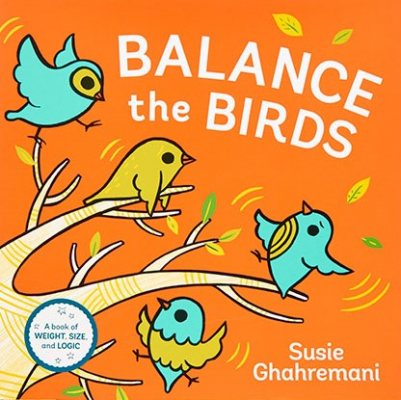
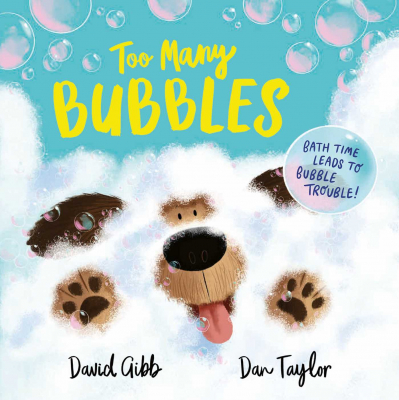

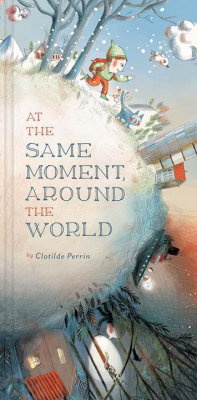

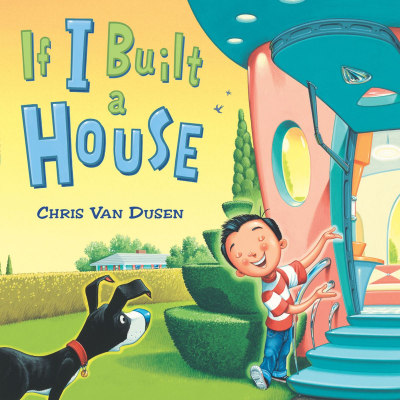


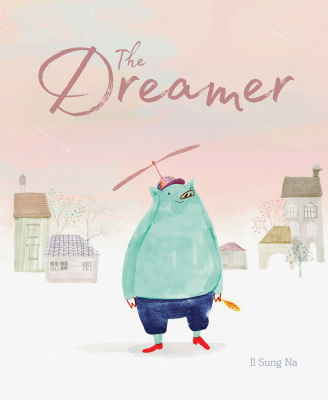
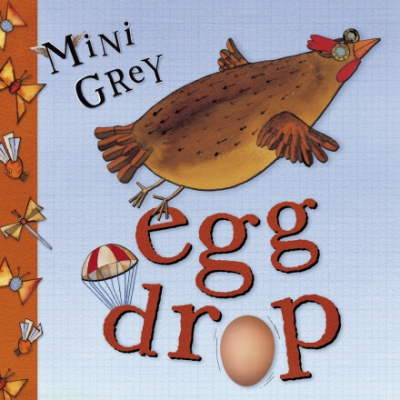
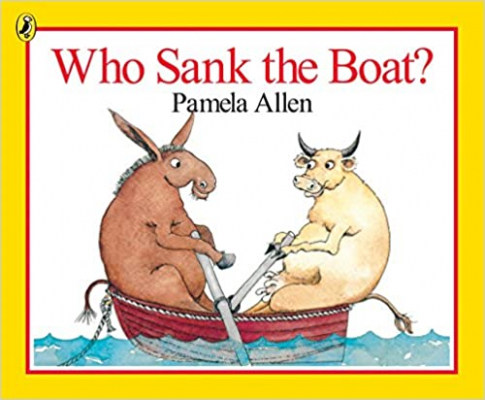
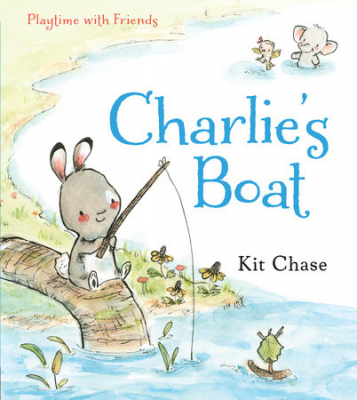
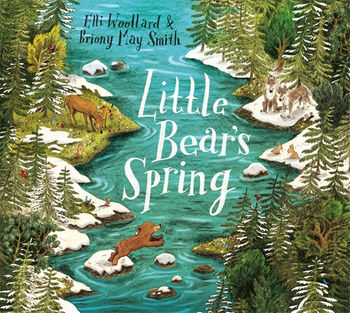
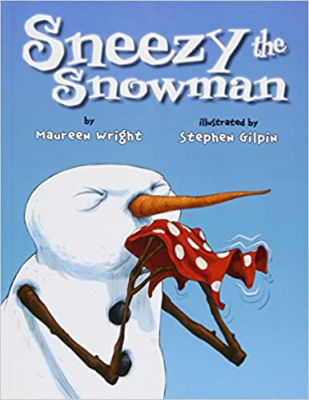
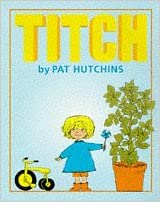
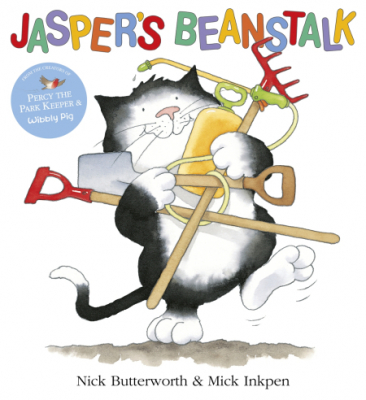



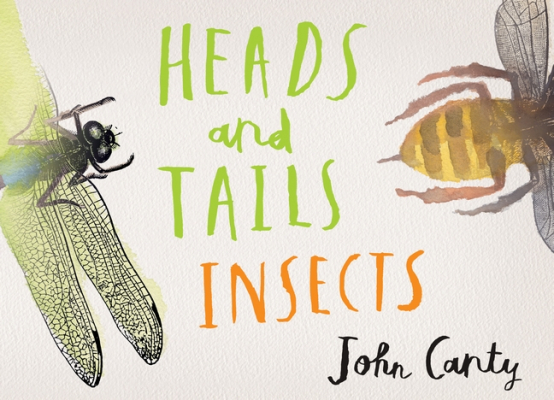
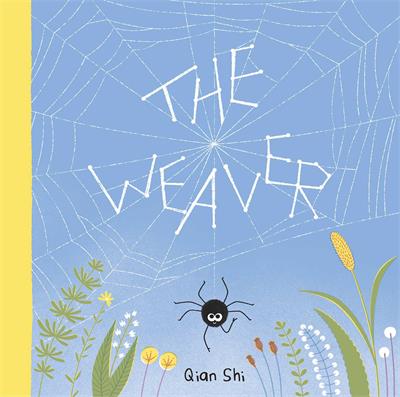
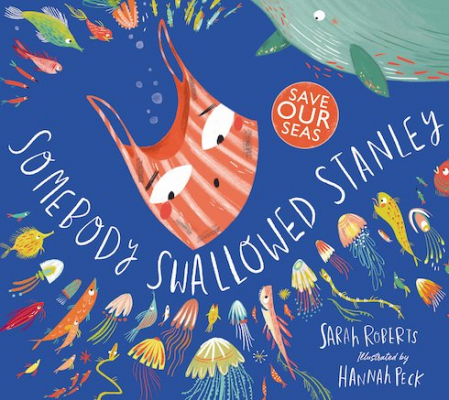
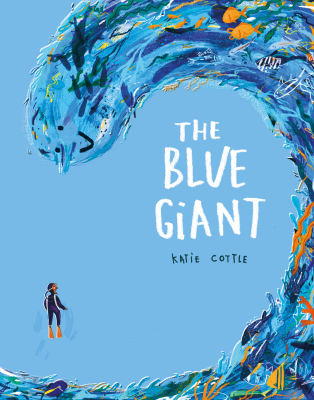
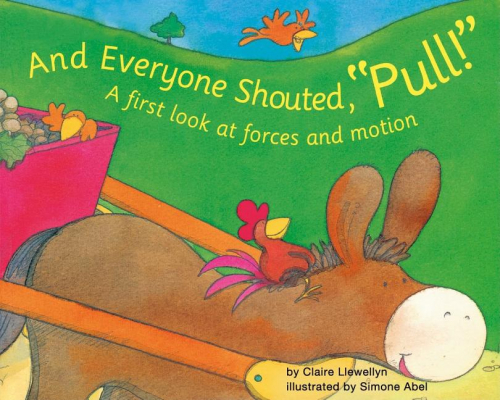
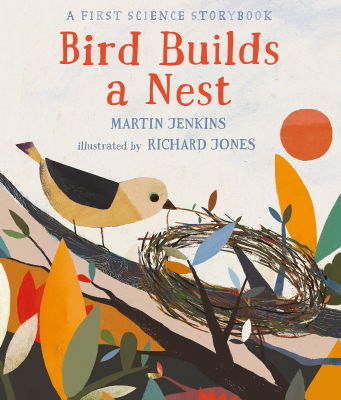
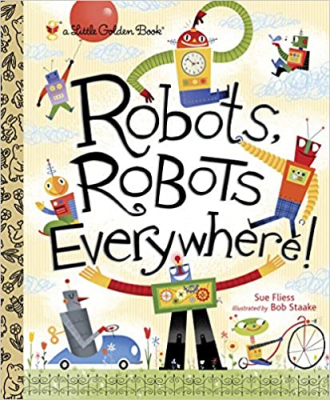
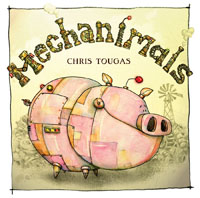
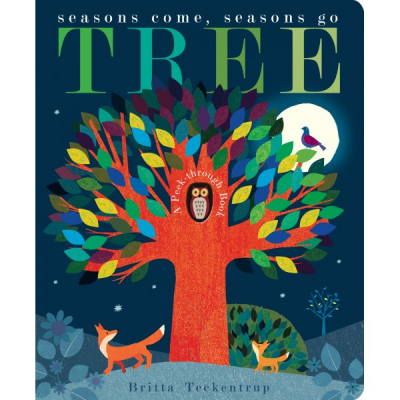
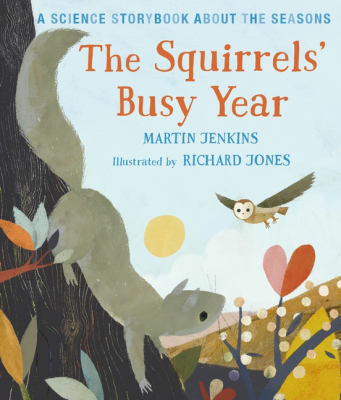


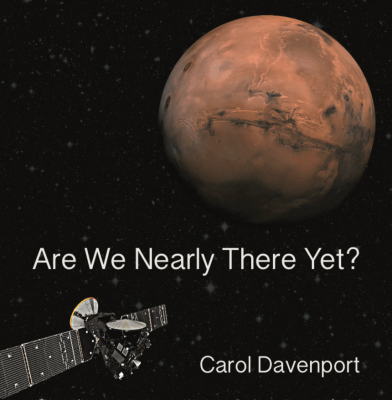
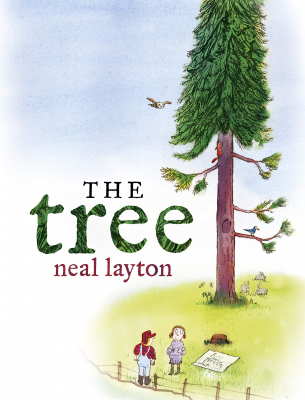
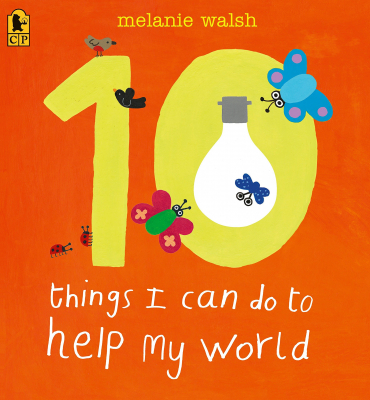
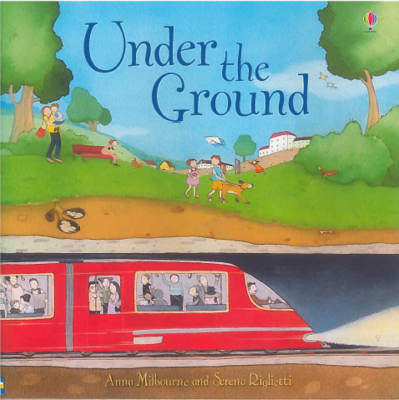
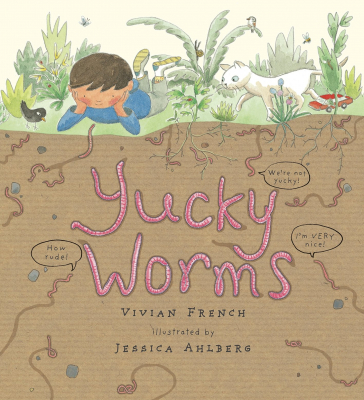
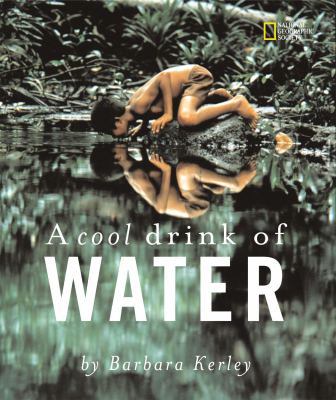
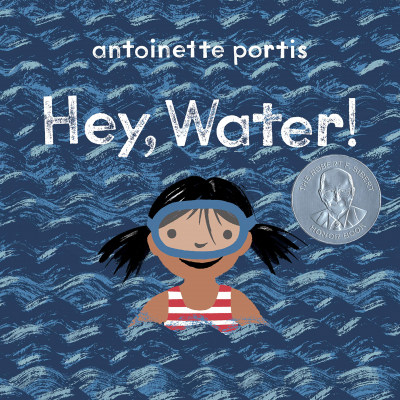
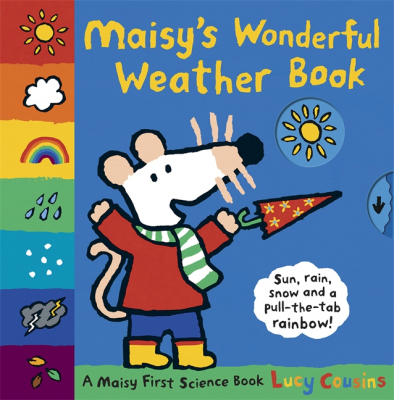


Leave a Reply
Want to join the discussion?Feel free to contribute!